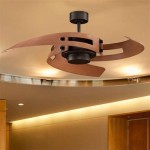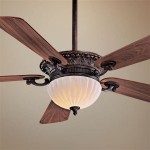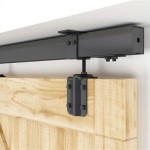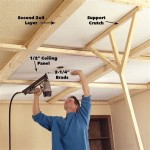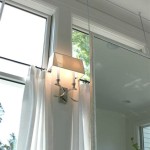What Is a Suspended Ceiling Grid System?
A suspended ceiling grid system, often referred to as a T-bar ceiling, is a structural framework that supports a false ceiling, creating a space between the existing ceiling and the new ceiling surface. This space, known as the plenum, provides accessibility for utilities, ventilation, and lighting, while offering a clean and aesthetically pleasing finish to the room. Suspended ceiling grid systems are commonly found in commercial buildings, offices, hospitals, retail spaces, and even some residential homes.
Key Components of a Suspended Ceiling Grid System
A suspended ceiling grid system consists of several key components:
- Grid: The grid is the primary structure that supports the ceiling tiles. It is typically made of metal, often galvanized steel or aluminum, and consists of T-shaped sections called "T-bars." The T-bars are interconnected to form a grid pattern, creating a robust framework that can support the weight of the ceiling tiles and any fixtures installed on them.
- Ceiling Tiles: The ceiling tiles are the visible surface of the suspended ceiling. They come in various sizes, designs, and materials, offering flexibility in creating different aesthetic effects. Some common materials include acoustic tile, mineral fiber tile, gypsum board tile, and metal tile.
- Hangers: Hangers are used to suspend the grid from the existing ceiling. They are typically made of wire or metal rods and are attached to the existing ceiling structure with screws or clips. The hangers distribute the weight of the ceiling grid and tiles evenly across the ceiling.
- Main Tees: Main tees are the longer T-bars in the grid system that run perpendicular to the shorter cross tees. They provide the main support for the entire grid structure.
- Cross Tees: Cross tees are the shorter T-bars that intersect the main tees, creating a grid pattern. They provide additional support and stability for the grid.
Advantages of Suspended Ceiling Grid Systems
Suspended ceiling grid systems offer several advantages over traditional plaster ceilings:
Accessibility and Maintenance
One of the primary advantages of a suspended ceiling grid system is its ease of access. The space above the suspended ceiling, known as the plenum, provides easy access for maintenance, repairs, and upgrades. Electrical wiring, plumbing, and HVAC systems can be easily accessed and modified without disrupting the ceiling or causing damage to the surrounding area. This easy accessibility can significantly reduce the time and cost of maintenance and repairs.
Flexibility and Design Options
Suspended ceiling grid systems offer immense flexibility in terms of design and configuration. The variety of available ceiling tiles, materials, and colors allows for endless creative possibilities. You can create unique patterns, integrate lighting fixtures, and even install acoustic panels for noise reduction, enhancing the overall aesthetics and functionality of the space.
Fire Safety
Suspended ceiling grids can contribute to fire safety by providing a fire-resistant barrier. The space between the existing ceiling and the suspended ceiling allows for the installation of fire suppression systems and sprinkler heads, quickly containing any potential fire and minimizing damage. Additionally, many ceiling tiles are made of fire-resistant materials, further enhancing fire safety in the building.
Acoustic Control
Suspended ceiling grids can significantly improve acoustic control within a space. The plenum space allows for the installation of acoustic panels or tiles that absorb sound, reducing noise levels and creating a more pleasant or conducive environment for work or other activities. By effectively managing noise, suspended ceiling grids can improve the overall comfort and productivity of a space.
Types of Suspended Ceiling Grid Systems
Suspended ceiling grid systems come in various types, each with its unique features and advantages.
Standard Grid Systems
Standard grid systems use standard T-bars and ceiling tiles to create a simple and cost-effective ceiling solution. They are widely used in offices, retail spaces, and other commercial buildings.
Concealed Grid Systems
Concealed grid systems use special T-bars and ceiling tiles that hide the grid structure, creating a more seamless and aesthetically pleasing look. This type of grid is often chosen for residential spaces or when a clean, minimalist aesthetic is desired.
Integrated Grid Systems
Integrated grid systems incorporate lighting fixtures, air vents, and other elements into the grid structure, creating a unified and integrated ceiling design. This approach can simplify the installation process and enhance design flexibility.
Installation and Maintenance
Installing a suspended ceiling grid system requires professional expertise and is typically done in stages. First, the support grid is installed, followed by the installation of the ceiling tiles. The installation process should be carried out carefully to ensure the grid is securely attached and the tiles are properly aligned. Regular maintenance involves cleaning the tiles and the grid structure. Periodic inspections are also recommended to check for any damage or wear and tear.

A Basic Guide To Suspended Ceiling Grids Tiles

Grid Ceiling

Duo Exposed Grid Ceiling System Rondo

T Grid Suspension System Gti

Suspended Ceiling Installation Ceilings

Suspended Ceiling Grid Systems Bayswater Plasterboard Fibre Cement

A Typical Suspended Ceiling Components 13 B Back Bracing Scientific Diagram

Suspended Drop Bulkhead Ceiling Systems Rondo

Ceilings Armstrong Residential
-828-p.jpg?strip=all)
10m2 Gold Suspended Ceiling Grid Suspension System 600mm X
Related Posts



